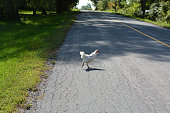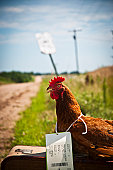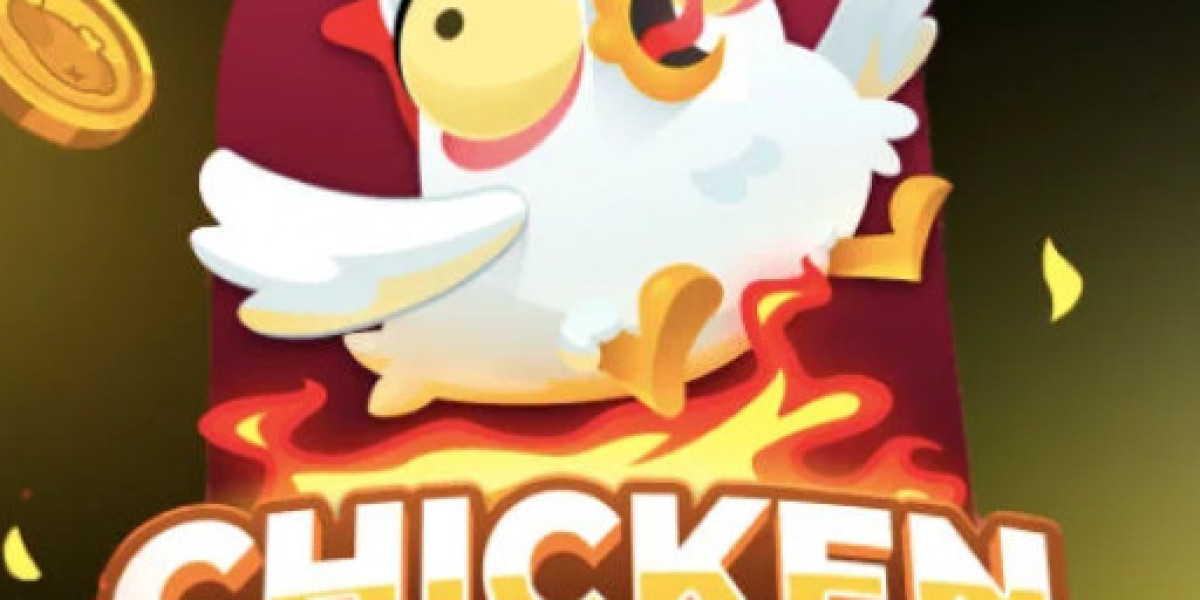
The Perilous Path: A Deep Dive into the Game of Chicken and its Cultural Impact
The game of Chicken, a test of nerve and a dangerous dance with potential disaster, has captured the human imagination for decades. More than just a reckless dare, it's a potent symbol of risk-taking, ego, and the complex interplay between individual will and collective consequence. From its roots in adolescent bravado to its sophisticated use as a metaphor in political science and economics, Chicken provides a lens through which we can examine the limits of rationality and the seductive allure of brinkmanship. This article delves into the history, psychology, variations, and cultural impact of this enduring, yet perilous, game.

Origins and Early Manifestations
While the precise origin of the game of Chicken is shrouded in the mists of time, its core elements—a challenge, a display of courage (or foolhardiness), and a potential for mutual destruction—have likely existed in various forms throughout human history. Early manifestations probably took the form of verbal dares or physical contests designed to establish dominance within a social group. However, the version we recognize today, often involving vehicles hurtling towards each other, gained prominence in the mid-20th century, fueled by the rise of car culture and a fascination with speed and danger.
The post-World War II era, characterized by a sense of existential anxiety and a burgeoning youth culture, provided fertile ground for the game's proliferation. Cars, symbols of freedom and rebellion, became the instruments of choice for testing boundaries and defying authority. Depictions in popular culture, such as the iconic "chickie run" scene in the 1955 film "Rebel Without a Cause," solidified the game's image as a symbol of teenage angst and a challenge to the established order. James Dean's character, Jim Stark, embodies the archetype of the conflicted youth, grappling with societal expectations and seeking validation through acts of daring. This portrayal resonated deeply with audiences and helped cement Chicken's place in the cultural lexicon.

The Psychology of Chicken: Why We Play the Game
Understanding the psychology behind the game of Chicken requires exploring several key factors that drive human behavior, including risk assessment, ego, social pressure, and the desire for dominance. At its most basic level, the game is a test of wills. Each participant attempts to convince the other that they are more willing to risk a catastrophic outcome. This creates a psychological battleground where perception and deception become crucial weapons.
One of the primary drivers is ego. The fear of being labeled a "chicken" – a coward – can be a powerful motivator, particularly for young men seeking to establish their reputation and social standing. This fear can override rational calculation and lead individuals to take increasingly reckless risks. Social pressure plays a significant role as well. In the presence of peers, the need to conform and avoid ridicule can amplify the pressure to maintain a façade of bravery, even when internal doubts are present.
Furthermore, the game taps into the human desire for dominance and control. By forcing the other participant to swerve, the player asserts their superiority and gains a sense of power. This desire for control can be particularly strong in situations where individuals feel powerless or marginalized. Finally, cognitive biases such as the optimism bias (the tendency to overestimate the likelihood of positive outcomes and underestimate the likelihood of negative outcomes) can distort risk assessment and lead individuals to believe that they are somehow immune to the potential consequences of their actions.
Variations and Modern Adaptations
While the classic car-based version of Chicken remains the most iconic, the game has spawned numerous variations and adaptations, reflecting its enduring appeal and adaptability to different contexts. These variations can range from relatively harmless dares to highly dangerous activities with potentially fatal consequences.
Here's a table outlining some common variations:
| Variation | Description | Risk Level |
|---|---|---|
| Car Chicken | Two cars drive towards each other; the first to swerve loses. | High |
| Bicycle Chicken | Similar to car chicken, but with bicycles. | Medium |
| Motorcycle Chicken | Similar to car chicken, but with motorcycles. | High |
| Cliff Chicken | Two people walk towards a cliff edge; the first to back down loses. | High |
| Financial Chicken | Two companies engage in aggressive pricing wars; the first to raise prices loses market share. | Medium |
| Negotiation get chicken road game | Two parties hold firm on their demands in a negotiation; the first to compromise loses face. | Medium |
In the realm of international relations, the concept of Chicken is often used to describe situations where two or more nations engage in brinkmanship, pushing their respective positions to the brink of war in the hope that the other side will back down. The Cuban Missile Crisis is a classic example of this, where the United States and the Soviet Union teetered on the edge of nuclear war before ultimately finding a way to de-escalate the situation. In business, companies may engage in "Chicken" tactics in price wars or competitive bidding, each trying to outmaneuver the other without regard for the potential long-term consequences. The rise of reality television has also seen the game of Chicken adapted into various challenges and competitions, often involving physical or mental endurance tests designed to push contestants to their limits.
Chicken as a Metaphor: Game Theory and Beyond
Beyond its literal interpretations, the game of Chicken has become a powerful metaphor for understanding strategic interactions in a wide range of fields, including game theory, political science, and economics. Game theory provides a formal framework for analyzing strategic decision-making, and the game of Chicken serves as a classic example of a non-cooperative game with multiple Nash equilibria.
In game theory terms, Chicken can be represented as a matrix where each player has two options: "swerve" or "stay." The payoffs for each combination of choices are structured in such a way that the best outcome for each player is to stay while the other swerves. However, if both players stay, the result is a catastrophic collision. This creates a situation of strategic interdependence, where each player's optimal choice depends on what they believe the other player will do.
The game highlights the challenges of cooperation and communication in situations where trust is lacking. It also illustrates the potential for miscalculation and the dangers of relying on assumptions about the other player's rationality. In political science, the game of Chicken is often used to model international crises and arms races. The logic of mutually assured destruction (MAD) in nuclear deterrence can be seen as a form of Chicken, where the threat of retaliation is designed to dissuade either side from launching a first strike. In economics, the game can be used to analyze pricing strategies and competitive behavior in oligopolistic markets.
The Ethical Implications and Social Commentary
The game of Chicken raises profound ethical questions about individual responsibility, the pursuit of glory, and the consequences of reckless behavior. Is it morally justifiable to engage in activities that put oneself and others at risk for the sake of ego or social status? Does the potential for personal gain outweigh the potential for harm? These are complex questions with no easy answers.
The game also serves as a commentary on societal values and the pressures that individuals face to conform to certain norms. In many cultures, there is a strong emphasis on courage, toughness, and the ability to withstand pressure. These values can sometimes be taken to extremes, leading individuals to engage in risky behaviors in order to prove themselves or avoid being seen as weak. Furthermore, the game of Chicken can be seen as a critique of the competitive spirit that pervades many aspects of modern life. The relentless pursuit of success and the pressure to outperform others can sometimes lead individuals to make unethical or reckless choices.
Ultimately, the game of Chicken serves as a cautionary tale about the dangers of unchecked ambition, the seductive allure of risk, and the importance of considering the potential consequences of our actions. It reminds us that true courage lies not in the willingness to take unnecessary risks, but in the ability to make sound judgments and to act responsibly, even in the face of pressure.
Conclusion: The Enduring Legacy of a Dangerous Game
The game of Chicken, in its various forms, continues to captivate and challenge us. From its roots in adolescent rebellion to its sophisticated applications in game theory and political science, it serves as a powerful reminder of the complexities of human behavior and the enduring tension between individual will and collective consequence. While the game itself may be dangerous and ethically questionable, its symbolic value as a metaphor for strategic interaction and risk assessment remains undeniable. By understanding the psychology, variations, and ethical implications of Chicken, we can gain valuable insights into the dynamics of competition, cooperation, and the limits of rationality in a world increasingly defined by uncertainty and risk. The game’s enduring legacy lies not in the celebration of recklessness, but in its capacity to provoke critical reflection on the choices we make and the values we uphold.








